The Wild Robot
 for action/peril and thematic elements.
for action/peril and thematic elements.
Reviewed by: Keith Rowe
CONTRIBUTOR
| Moral Rating: | Better than Average |
| Moviemaking Quality: |
|
| Primary Audience: | Kids Preteens Family |
| Genre: | Sci-Fi Animation Comedy Adaptation |
| Length: | 1 hr. 41 min. |
| Year of Release: | 2024 |
| USA Release: |
September 27, 2024 DVD: December 3, 2024 |


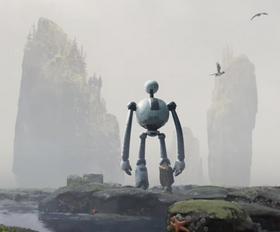


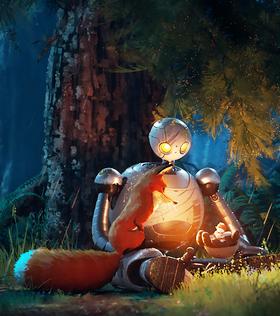
Survival on an uninhabited island

Butterflies of the rainforest
Animals of the Bible
What is LYING? What are the truly BIG lies of our world?
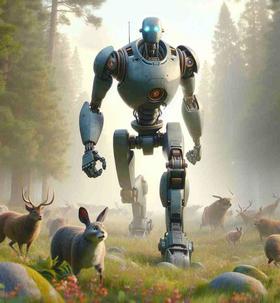
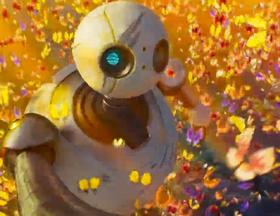
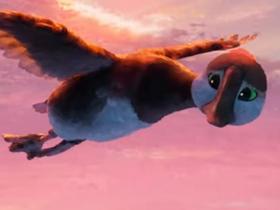
| Featuring |
|---|
|
Lupita Nyong'o … Roz / Rummage (voice) Pedro Pascal … Fink (voice) Kit Connor … Brightbill (voice) Bill Nighy … Longneck (voice) Ving Rhames … Thunderbolt (voice) Mark Hamill … Thorn (voice) Catherine O'Hara … Pinktail (voice) See all » |
| Director |
|
Chris Sanders |
| Producer |
|
DreamWorks Animation Universal Pictures See all » |
| Distributor |
In some far-flung forest, frolicking animals accidentally activate a robot inside a busted crate. Following its programming, the robot, Rozzum unit 7134 (voiced by Lupita Nyong'o), tries to assist the skittish animals, but ends up doing more harm than good in many instances. In a fateful moment, Roz falls onto a bird’s nest, killing the mother and crushing all but one of the eggs.
Roz’s mission becomes protecting the egg at all costs, especially from a wily fox named Fink (Pedro Pascal) who fancies the egg as his next meal.
As if fending off ferocious beasts isn’t enough of a challenge, Roz’s task gets far more complicated when the egg hatches, revealing an adorable little chick that follows the robot around as if the mechanical being is its mother. Reprogramming itself to learn how the various creatures communicate, Roz seeks advice on how to deal with this “crushing obligation” from a possum mother, who simply recommends patience.
But how can a robot programmed to serve a human family raise a tiny gosling on a hostile island where everything wants to eat it?
Welcome to the wondrous world of “The Wild Robot.”
Based on the book of the same name by Peter Brown, “The Wild Robot” is directed by Chris Sanders (“How to Train Your Dragon”) and produced by DreamWorks Animation and Universal Pictures. Despite the fact that this is the final animated movie to be produced entirely in-house by DreamWorks, “The Wild Robot” is a real gem. Visualized in a similar style to Hayao Miyazaki’s celebrated animation features, “The Wild Robot” has a gorgeous, painterly aesthetic that gives it a dreamy, fairy tale quality.
The movie boasts several magical sequences, like when Roz touches a butterfly-blanketed tree and the myriad insects explode into a swarm of color and scintillating beauty, or when Roz teaches young Brightbill (Kit Connor) how to fly down a leaf-covered stonework runway, or when Roz holds onto a tree with one arm and leans out over the edge of a cliff to watch the migrating geese fly away into the sunset.
In contrast to these “big moment” sequences, even the movie’s quiet passages are deeply affecting, like the shot of a melancholy Roz sitting in the forest as snow gently falls to the ground. The “story time” sequence, which is animated in a different style than the rest of the movie, is sheer genius. In short, the lovingly crafted and brilliantly realized animation in this film creates an alluring and unforgettable world of wonder.
As with the assorted forest animals, the movie’s cast is equally diverse. In addition to Nyong’o, Pascal and Connor, many notable stars lend their voice talents to the film, including: Bill Nighy as elder goose and migration leader Longneck, Ving Rhames as the falcon Thunderbolt, Mark Hamill as the bear Thorn and Catherine O'Hara as the possum mother Pinktail.
Spoiler alert: Though populated with colorful characters and buttressed by an engaging and moving story, there’s very little that’s new here. The “swapping sympathies” plot—where an individual from a more advanced society falls in with the natives, identifies with them, and defends them against aggressive members of their own race—has been employed in many movies, including: “Avatar” (2009), “Dances with Wolves” (1990) and “Enemy Mine” (1985).
Also, there’s an oblique reference to “Rudolph the Red-Nosed Reindeer” (song and 1964 TV special). When Brightbill is first reunited with the other members of his species, they call him names and ostracize him. Later, when the geese come under attack by robots, Longneck places Brightbill in charge of leading the birds to safety. When the geese arrive back home, they praise Brightbill for his leadership and courage under fire. Like Rudolph, Brightbill goes from outcast to hero (a redemptive story arc that’s also present in “Happy Feet”).
Allusions aside, the story (adapted by Sanders from Brown’s book) contains several adult topics that add a deeper dimension to the film. This isn’t the first story to depict a robot walking through nature, but that visual foregrounds the impact of technology (specifically AI) on nature. Can technology and nature peacefully coexist, as the movie suggests? Time will tell.
Another fascinating subplot involves predetermined responses vs. free will. In a desperate attempt at dealing with the complexities of parenting, Roz alters its programming. This decision gives Roz the capacity to feel, and eventually love. But when Roz encounters another of its kind, the other robot determines that by altering its programming, Roz has become defective. This is an ironic reaction since the human capacity to override our programming is what makes us individuals… and makes life worth living.
But enough of the heady analysis… this is a kids’ movie. And, as is the case with many family-focused animated movies, “The Wild Robot” is fairly clean. However, there are a few items of concern that need to be addressed.
Objectionable Material
OFFENSIVE LANGUAGE/VULGARITIES: There’s no swearing in the movie, but there are some unkind words, including: “dummy,” “weirdo,” “runt,” “loser” and “jerk.” The word “butt” is used twice. Some objectionable phrases are: “that sucked,” “freak show” and “I hate you.” One of the most clever “clean expletives” I’ve ever heard is when one character calls another character’s statement “male bovine excrement.”
VIOLENCE: Though there isn’t any graphic violence in the movie, there are a few scenes that might be too intense for younger viewers. These scenes include a bear chasing Roz through the forest, robots firing laser beams at a flock of geese, large robots attacking the animals, the animals fleeing a forest fire and a laser cannon blasting away at the attacking geese. Perhaps the most graphic scene is when a young possum vomits on its mother. Ew!
Spiritual Aspects
There are a number of spiritual themes and moral matters to explore in the movie, so let’s dive right in.
Death
For a kids’ movie, “The Wild Robot” contains an inordinate number of references to death. Indeed, the dialog is saturated with words like “dead/die/dying,” “expire,” “kill/killed,” “murder,” “terminated,” and other morbid terms like “squish you into jelly.” Here are just a few examples of such dialog: “Why aren’t we killed yet?” Another line is, “Hope you don’t die.” And, “Did that thing die?” The question, “Are you here to kill us?” is posed twice. Alarmingly, much of this fatalistic dialog comes from young characters.
It’s unclear why such dire dialog is infused into this ostensibly family film. Perhaps it’s Sanders’ way of underscoring the predatory, “survival of the fittest” aspect of life in the great outdoors. But is an animated film the appropriate place for this macabre topic?
As believers in Christ, we have no reason to fear death since Jesus has given us the gift of eternal life (John 5:24). In John 11:25, Jesus said,
“I am the resurrection and the life. The one who believes in me will live, even though they die.”
Q & A
What is eternal life? and what does the Bible say about it?
What is eternal death?
Lying
Living up to his name, Fink says, “I lie for a living.” Sadly, he’s a bad influence on Roz. He tells the Robot that to survive in the wild it’s often necessary to lie. At the end of the movie, Roz admits to lying to a fellow robot. Delighted that Roz has engaged in deception, Fink says, “[you were] lying your butt off.”
Proverbs 19:9 is very clear about the fate of liars: “A false witness will not go unpunished, and whoever pours out lies will perish.”
Stealing
At the beginning of the movie, Fink tries stealing an egg (containing unhatched Brightbill). Later, Fink encourages Roz to steal a beaver’s home and use it as a model for a much larger hut. These are sinful actions, for as the 8th Commandment (Exodus 20:15) plainly states, “You shall not steal.”
Life Purpose
After being activated, Roz roams the forest looking for ways to help the forest animals. Roz is programmed to ask, “Do you need assistance?” and casts about in search of its first task. Roz finally acquires its mission when baby Brightbill gloms onto the robot. Roz admits to Pinktail, “I don’t have the programming to be a mother.” In order to keep up with the demands of being a parent, Roz alters its programming to allow for improvised solutions. Though Roz’ initial purpose is to raise Brightbill, its ultimate purpose is to bring the animals together (See: Unity).
Like Roz, many people struggle to find their niche in life, and some may never find their true calling. The good news is that the Creator made us for a specific purpose and has given us unique gifts and talents to serve others (1 Peter 4:10).
Kindness
Roz believes “Kindness is a survival skill.” It’s also a Fruit of the Spirit (Galatians 5:22).
Love
A subtle theme woven into the fabric of the film is love. Brightbill loves Roz and, through the events in the film, Roz eventually comes to love Brightbill.
Unlike the fictionalized love presented in the movie, the finest example of sacrificial love in real life is when Jesus died on a Roman cross for the sins of humanity (John 3:16, Philippians 2:8). It truly is amazing grace that even while we were sinners, Christ still loved us enough to die for us (Romans 5:8).
John 15:13 says, “Greater love has no one than this: to lay down one’s life for one’s friends.” This is exactly what Roz does during a blizzard when the animals are trapped under snow or frozen in ice. Roz rescues all the animals and brings them back to the hut, but in the process, the robot’s power is completely depleted. Roz’ sacrificial act demonstrates a deep love and commitment to the forest animals.
Unity
Normally, unity is something everyone should desire. However, the movie’s version of unity is couched in a kind of liberal idealism that’s dangerous, particularly to impressionable, young children. Plus, isn’t the theme of isolationism vs. social integration a tad advanced (and uninteresting) for most kids? And is this just an innocuous subplot or a thinly-veiled attempt at indoctrinating our children? Hollywood’s track record on such matters would point toward the latter.
After rescuing the animals, Roz tells them they can stay inside the warm hut as long as they all get along (and don’t eat each other). Later, the animals band together to strike against the invading robots. After defeating the maniacal machines, Roz expresses pride in how the animals came together to fight a common enemy.
Though this kumbaya moment gives the movie a “warm fuzzy” ending, it isn’t grounded in reality. Thorn tells Fink he’ll eat him the next day and then laughs at the notion since they’re good friends now. Of course, this probably would not happen in the real animal kingdom.
So, what kind of message does this convey to the kids in the audience? That they can make friends with different kinds of people? In and of itself, not a bad principle. But welcoming everyone with open arms can be dangerous. It’s wise to be wary of the wolves in the world. As President Reagan once said, “Trust, but verify.”
Those who pursue Earthly unity will only find frustration and bitterness, for the only true, lasting unity is in Heaven. In the coming Millennium, lions, wolves, leopards, lambs and goats are best buds (Isaiah 11:6).
Final Thoughts
“The Wild Robot” joins the small set of stellar robot animated flicks, which represent some of the finest animated features ever made: “The Iron Giant” (1999), “WALL-E” (2008) and “Big Hero 6” (2014). Regardless of where it ranks, “The Wild Robot” justly deserves to be placed alongside these other animated greats.
Despite some minor quibbles over the appropriateness of its speech and subject matter, “The Wild Robot” should appeal to a wide audience, including kids and adults who enjoy well-told, finely-rendered animated movies.
The movie’s coda sets up the possibility for another story with these lovable characters. But whether or not a sequel is ever produced, by DreamWorks or some other animation studio, this movie is a wild ride worth taking.
- Violence: Mild
- Profane language: Minor
- Wokeism: Minor
- Vulgar/Crude language: None
- Nudity: None
- Sex: None
- Drugs/Alcohol: None
- Occult: None
See list of Relevant Issues—questions-and-answers.


Once such improvement was Roz’s design. Unlike the unemotional tin can from the books, Roz from the movie is much more powerful and capable. This makes the entire story so much more conceivable and realistic. Also, this design has the expression that the previous Roz lacked. Because of this, you can empathize with her more, and root for her.
Also, characters from the book that I believe should have played a bigger role in the book do so in the movie. Fink is much more prominent and goes through his own character-arc. Also, Pinktail plays the role of a mentor figure. She’s much more sarcastic and could care less about the world around her. However, deep down she is a good person and a great influence for Roz.
Except for some other changes that I am too lazy to write (mostly because they don’t need to be written about), Chris Sanders did a one to one adaptation for the books. It is fun, hilarious in some places, and spreads a great theme about family and love. Also, the movie just looks amazing. So much so I could do a whole other review just for the looks. However, some problems still pop up.
Warning: I don’t like putting politics into my reviews. However, I will talk about one scene that alludes to climate-change, and I am not afraid to express my beliefs on the subject. Take my critiques how you will, but please try to see my point of view.
Now, the first problem I have with the movie is subjective. *SPOILER ALERT* In the climax of the movie someone says something, then Roz says, “I am a Wild Robot.” That line gave me chills. It gave me chills up until when Roz proceeded to go, “AWOOOOOOOOOO.” I find this very cringe inducing, though others might have different opinions. My main reason is that it sounds very strange to hear a full-grown woman’s voice go, “AWOOOOOOOO.” As I said, this is a subjective topic, and kinda insignificant, but I still don’t like it. However, it didn’t subtract much from my experience, though it could have been left out.
Lastly, there is one scene in which Brightbill is flying over the Golden Gate Bridge. Strangely, it is submerged under water and whales swim over it. Now, I see two explanations to this. One, something like an earthquake made the bridge fall into the water, or two, the ice caps melted and the waters rose to an unnatural degree. Sadly, the latter reason seems more likely.
I don’t really respect the idea of climate change all that much, because although the earth is warming, we have only been monitoring the temperature for a few hundred years, if that. We have no idea if this has happened before, and it might happen again. How do we know this is not normal? We don’t, so I see no reason to panic about it. Cautious observation yes, but not shutting down the oil mines or teaching our kids about how we’re destroying the world.
Those out of the way, here is my summary. “The Wild Robot” is a faithful adaptation of a wonderful book and has no wokeism in your face. From a quality standpoint this movie is immaculate, with only subjective problems. I cannot recommend this movie more. Go watch it and decide what you think.
Moral rating: Better than Average / Moviemaking quality: 4
PLEASE share your observations and insights to be posted here.
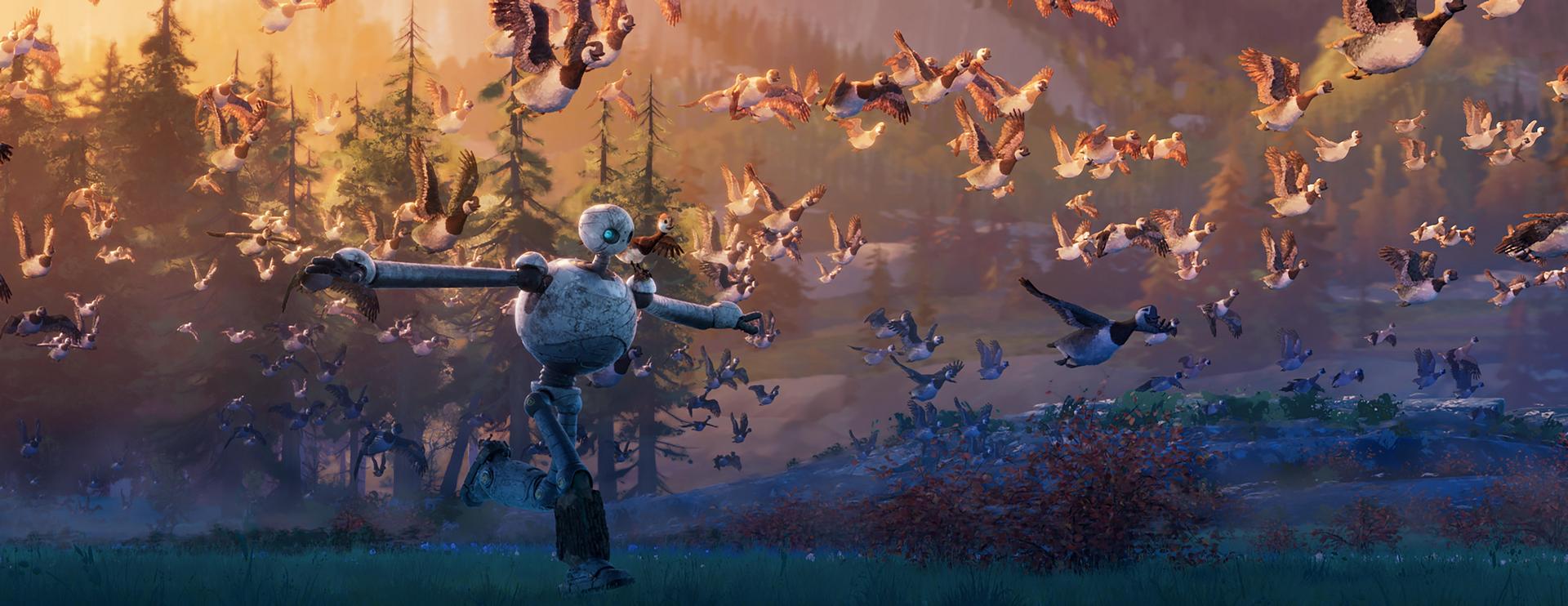
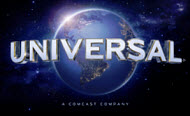
The idea that animated films should not tackle tough topics like death is ludicrous. Think of the best animated films of our time, like “The Lion King,” or “How to Train Your Dragon.” Death is a constant threat and theme in those movies as well. The Wild Robot is a masterpiece, and one of Dreamworks” best movies yet, way outshining anything Disney puts out these days. Go watch it, it’s worth your time.
My Ratings: Moral rating: Good / Moviemaking quality: 5